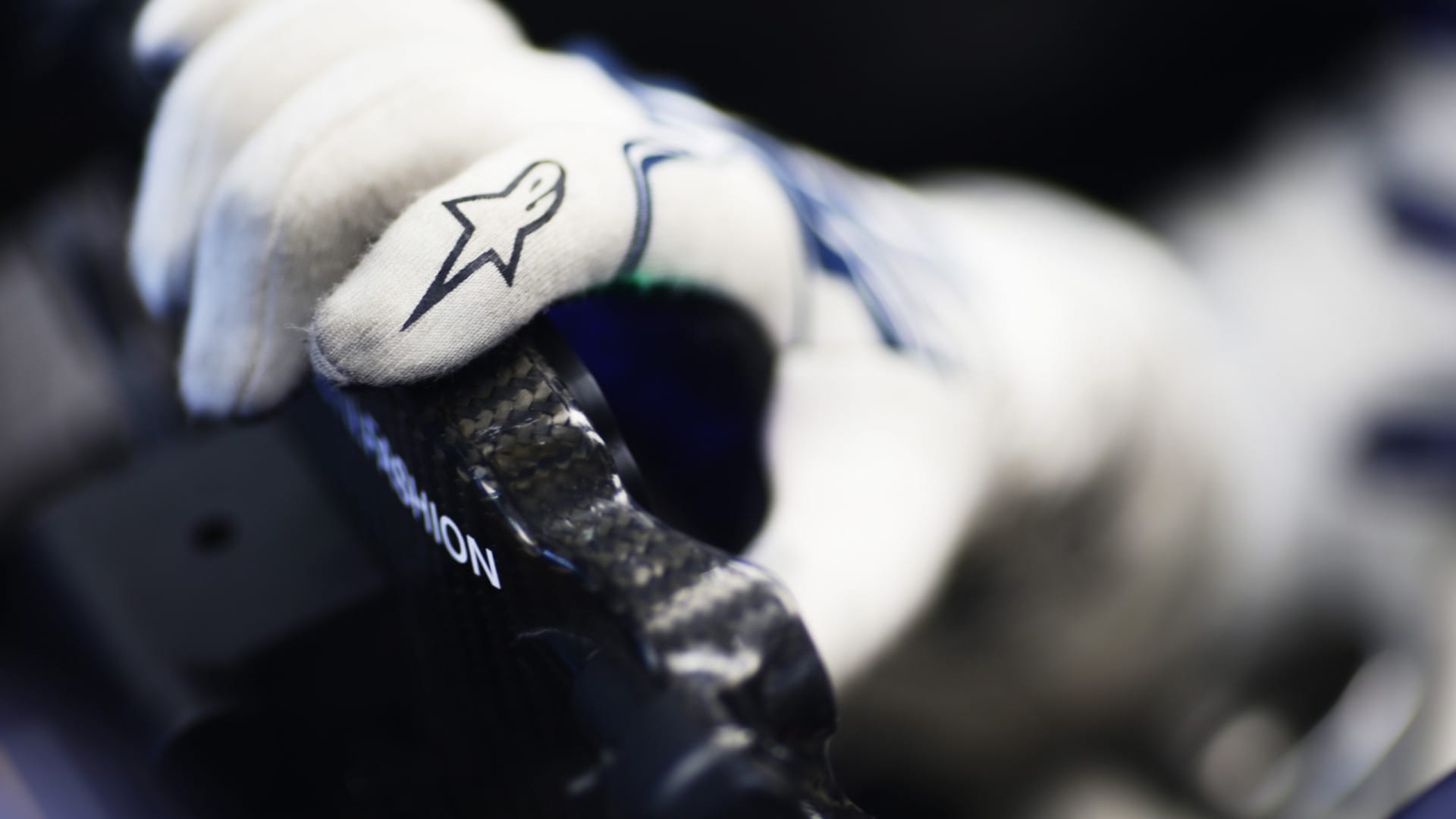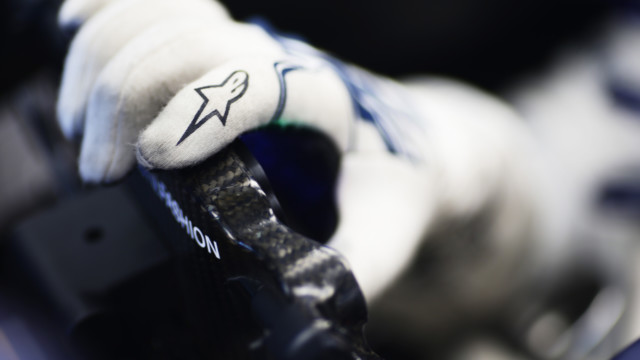Do F1 Cars Have A Clutch?


Formula 1 cars are advanced pieces of machinery that often look like rocket ships compared to most road cars. But even so, on a fundamental level, they both have steering wheels, transmissions, brakes and tires. However, the thing that most people want to know is, do F1 cars have a clutch?
To answer if F1 cars have a clutch, yes, they do, though it is not a traditional pedal like you would see in your road car. The F1 clutch is on the steering wheel and works whenever an F1 driver flicks their shift paddles to change the gear. When that happens, a computer operates the clutch to adjust gears.
There are several key differences between the clutch in a road car and those in an F1 car. For starters, the F1 clutch is not operated through the use of a pedal. Also, it is not always controlled by a computer. Drivers have to control the F1 car’s clutch with their hands or the fingers of one hand.
Looking at a modern F1 steering wheel will reveal an assortment of knobs, LEDs, dials, and switches. In addition, you will also discover some paddles attached to it. However, only one pair is used to shift the gear of the F1 vehicle. The other controls the clutch and is often shaped to the driver’s fingers to provide more comfort and control.
Demystifying F1 Cars: Do They Have a Clutch Pedal?
Watch: How an F1 Clutch Works
Are F1 cars manual or automatic?
When we think about performance driving and racing cars, we often think about the traditional manual transmission setup, giving the driver control over the vehicle via three pedals and a shifter. While controlling the gears yourself connects the driver to the machine, it is not how F1 cars are designed.
Formula One vehicles use highly automated sequential semi-automatic gearboxes with paddle-shifters following F1 regulations that state that one reverse gear must be used, with rear-wheel-drive and 8 forward gears can be used in an F1 vehicle, which was increased from 7 since the 2014 season.
The F1 vehicle’s gearbox can be constructed from carbon titanium materials, as heat dissipation is a vital issue in Formula One racing. The Gear Box should be bolted onto the back of the engine.
Systems such as traction control and launch control and fully-automatic gearboxes have been banned in F1 racing since 2008 and 2004, respectively, to make sure that no F1 teams are utilizing these systems illegally to obtain a competitive advantage, to keep costs down, and to keep driver involvement and skill essential in controlling the F1 vehicle.
To engage the F1 vehicle’s clutch, the driver initiates gear shifts utilizing the paddles mounted on the back of the steering wheel, hydraulic actuators, advanced electric solenoids, and the vehicle’s sensors perform the actual shift and the electronic throttle control.
The F1 car’s clutch control can also be performed electro-hydraulically, except when the vehicle is launching from a standstill (i.e., neutral, stationary) and moving into the first gear. In this circumstance, the driver needs to operate the clutch manually using a lever mounted on the back of the steering wheel.
When did F1 stop using clutch?
F1 Racing is no stranger to innovation or drastic changes. For once upon a time, the F1 vehicles had the same three pedals as road cars.
Back in the early days, In terms of technology, the F1 race cars were pretty even with road-going vehicles. And even though the 1950s saw companies like BRM bring innovations like pneumatic suspension and disc brakes, some of the technology of F1 cars stayed the same, such as, for example, that F1 cars still utilize three pedals setup.
Today, the relative scarcity of manual transmission cars makes the three-pedal driving setup increasingly rare. But back in the day of Sir Stirling Moss, automatic transmissions were only just starting to be introduced. Plus, they were rather heavy, expensive, and lacked performance. Because of this, the manual transmission remained the standard in F1 racing. It meant that all the F1 vehicles had the same three pedals set up as a typical sports car with the following: accelerator, brake, and clutch.
Those three-pedal setups and the gear lever remained in F1 cars for decades. Even when companies started experimenting with aero features and carbon fiber, the traditional design remained. And persisted in Formula Vee to this day.
However, you won’t find three pedals set up in a modern F1 vehicle today. And that’s because of the introduction of one innovative 1989 race car.
The Ferrari Type 640 F1 car at the 1989 Monaco Grand Prix, a ground-breaking 1989 Ferrari F1 vehicle that removed its clutch pedal.
So, if your vehicle has shift paddles, you have Ferrari to thank for it. More specifically, the 1989 Ferrari Type 640 F1 car to give thanks.
At the 1989 Brazilian Grand Prix, it introduced the concept of a paddle-shifted transmission to F1 racing, And in doing so, effectively eliminated the F1’s clutch pedals.
This innovation was inspired by the electro-hydraulic valves utilized in aircraft. However, the new transmission introduced by Ferrari encountered some issues in the beginning. But after a year, the Ferrari cars were doing well consistently.
Due to its success on the race track, by 1992, most F1 cars followed Ferrari, got rid of the stick setup, and installed paddle shifts. And by 1996, every F1 vehicle had shifted paddles and eliminated its gear lever.
Because of this, the F1 driver only engages the clutch at the race’s start. And shortly after that, the clutch pedal became another paddle on the steering wheel.
How do F1 cars shift so fast?
The speed at which F1 cars change gears is incredible. F1 vehicles change gears using a sequential semi-automatic transmission. This process enables the onboard computer to change gears on behalf of the driver.
A paddle situated behind its steering wheel makes gear selection in an F1 vehicle. The F1 driver can select the right-hand paddle to shift down and the left paddle to shift up.
The high velocity and speeds at which F1 cars drive require a particular transmission type, unlike those of a modified street car or a high-performance road sedan that uses either a stick shift system or an H-style transmission. Typically, the gearbox on an F1 vehicle consists of the clutch, a selector mechanism, a main, and a layshaft. Gears on the main shaft rotate with the gears on the layshaft and are directly engaged.
As stated earlier, the gear changes on your standard sedan are very different from that of an F1 racing car.
Since the gear changes are so fast during a race in an F1 car, No one would have the appropriate reflexes needed to change gears at the proper RPM efficiently. You need to understand that an F1 engine generates about 15,000 RPM, whereas your standard car operates only about 6000 to 9000 RPM.
To perform the gear shift in an F1 vehicle, the driver will initiate it by using the paddles mounted behind the steering wheel of the car, which is similar to those found in paddle shift option sedans. The computer will then use hydraulic actuators and sensors to perform the actual gear shift, which is usually accompanied by an electronic throttle control.
Generally, there would be a time gap between the actual gear change taking place and engaging the paddle. But in F1 cars, the onboard computer helps make the gear change possible in under 50ms. It is essentially helpful since all F1 vehicles utilize a 7-speed transmission longitudinally-mounted, and each gearbox must have a reverse gear.
How do F1 drivers switch gears?
As we mentioned earlier, the process of shifting gears in a Formula One car is not the same as shifting gears with a manual transmission in a road car.
Instead of using a conventional “H” gate selector, the drivers in an F1 vehicle select gears using paddles strategically located just behind the steering wheel of their F1 vehicle.
Upshifting gears is done on one side of the steering wheel, and downshifting on the other. Although fully automatic transmission systems, including those with sophisticated launch control, can integrate into Formula One, they are now deemed illegal.
This regulation of banning these systems enables F1 teams to reduce the overall cost of the power train of the F1 cars and allows the drivers to use their gear-shifting skills to achieve an advantage in a race.
How do Formula 1 drivers shift gears without a clutch pedal?
In the high-speed world of Formula 1 racing, precision and split-second timing are crucial. While it may seem perplexing that F1 cars do not have a clutch pedal, the truth is that these cutting-edge machines utilize a state-of-the-art technology known as seamless shift transmission (SST). This innovative system allows drivers to shift gears seamlessly without the need for a traditional clutch pedal. The SST utilizes advanced sensors and actuators that precisely control the engagement and disengagement of gears, ensuring lightning-fast gear changes with minimal loss of power or traction. This highly efficient system not only enhances acceleration but also eliminates the risk of human error during gear shifts, enabling drivers to maintain their focus on the track ahead.
Watch: How F1 Pedals Work
You may also like…
What RPM Do F1 Drivers Shift At?
Do F1 cars have a clutch? – Fast Facts
- F1 cars do not have a traditional clutch pedal like those found in regular passenger cars.
- F1 cars use a type of semi-automatic transmission known as a “seamless shift gearbox.”
- The seamless shift gearbox allows for lightning-fast gear changes without the need for a clutch pedal.
- Gear changes in an F1 car are achieved through paddle shifters located behind the steering wheel.
- The paddle shifters are operated by the driver using their fingers, allowing them to change gears with minimal effort.
- F1 cars utilize sophisticated electronics and hydraulics to automate the shifting process.
- This advanced technology ensures seamless and precise gear changes, maximizing performance on the track.
- The absence of a clutch pedal reduces weight and simplifies the overall operation of the car.
- F1 drivers no longer need to manually engage or disengage the clutch during races or qualifying sessions.
- The removal of a clutch pedal also eliminates the risk of human error during critical moments, enhancing safety on the circuit.
Do F1 cars have a clutch? – Final Thoughts
To summarize our answer to the question, Do F1 cars have a clutch? Here is the information that we have provided.
Yes, they do, but it is not the same as what you think. Modern F1 cars do have clutches. It works whenever an F1 driver flicks their shift paddles to change the gear. When that happens, a computer operates the clutch to adjust gears.
In addition, Formula One vehicles use highly automated sequential semi-automatic gearboxes with paddle-shifters following F1 regulations that state that one reverse gear must be used, with rear-wheel-drive and 8 forward gears are used in an F1 vehicle, which was increased from 7 since the 2014 season.
Furthermore, F1 cars shift rapidly because the onboard computer helps make the gear change possible in under 50ms. This is essentially helpful since all F1 vehicles utilize a 7-speed transmission longitudinally-mounted, and each gearbox must have a reverse gear.





